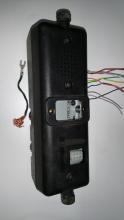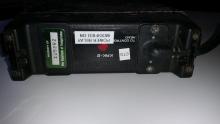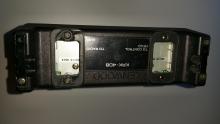Kenwood TK-x30 Series
Recently I made a barter deal to trade one of my TK-880's for a TK-630. I was talking with a friend on the air the other day, and we were discussing remote mount kits and how people like to cut the cables short when they remove them from municipal vehicles.
I promised him, that I would take some pictures for him, of how the remote mount kit, and wiring all goes together. I figured I would post it here, as there is always the possibility that someone else needs the info too.
I have a collection of the TK-x30 series radios. I have 2 sets of the 730/830 dual band, remote head units, and the 630 remote head unit. If you have any questions, feel free to contact me.
There are many useful resourses for these radios on the internet. Here are 2 of the ones I have used the most.
Here is the end of the cable. The braided shield goes around the wiring, and goes under a screw on each end. There is a total of 12 wires (not ocunting the braided shield). the white wire appears to be a center conductor, surrounded by another shield that is connected to the pin next to it. Looking at the pin out, its possible that a couple wires could be left out, depending on how you set up your radio. For instance, the remote speaker outputs, and the power switch control could be left out, if you connected your speaker to the back of the main radio, and used the ignition sense wiring. I think the biggest problem in replacing the cut cable will be proper shielding. Larry commented that maybe some old computer cables may work well. Pinout is here:
- Output for remote speaker
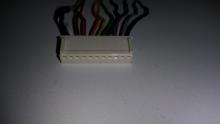
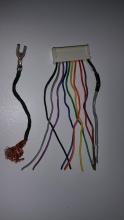
- output for remote speaker
- Power output after power switch
- Spare
- Power switch control signal input
- Clock output to display
- Data signal input/output for display
- Electronic volume input
- Earth
- Mic Signal input
- Mic earth
This is the back of the control head, with the remote mount cover on.
Here is the front of the single band radio, with the remote cable cut off
And this is the front of a dual band unit, with no cables plugged in.
